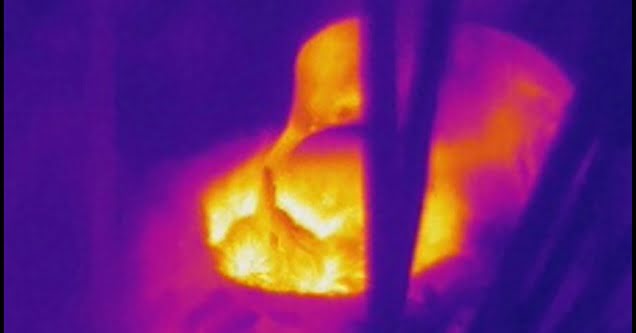Researchers at Loyola Marymount University's (LMU) Center for Urban Resilience are using thermal imaging cameras from Flir Systems to better understand how hummingbirds can maintain strength with little rest.

Thermal imaging helps unlock secrets of hummingbird energy usage. Courtesy of Flir Systems.
Understanding the physiological mechanisms hummingbirds use to cope with extreme energy requirements and limitations may open the door to broader human medical applications such as the necessity to reduce oxygen and food consumption during long-term space travel.
Hummingbirds need to maintain a high metabolism because they use energy at such extreme rates. Due to their small size, they consume the caloric equivalent of 300 hamburgers in nectar daily. Unless a female hummingbird is nesting, nightly temporary hibernation, or torpor, is vital to survival. Torpor involves the drastic reduction of body temperature, but nesting hummingbirds are unable to enter this state as they must use their body temperature to look after their eggs.
Because body temperature is the primary indicator of torpidity, the researchers needed a way to monitor nests without disturbing the birds and introducing variables that could alter findings. By using Flir's C2 handheld and Vue Pro R thermal aerial surveillance drone cameras, LMU’s research team has been able to monitor birds from the air while simultaneously capturing frequent, accurate and non-contact temperature readings.
LMU researchers are currently monitoring 26 nests to measure the energy associated with female hummingbirds by thermally monitoring each of the nesting birds state of torpidity.
Flir is a developer of sensor systems and thermal imaging systems.